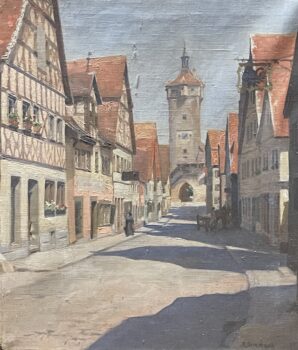Clara Olmstead Simmons: Rediscovering a Lost American Landscape Artist
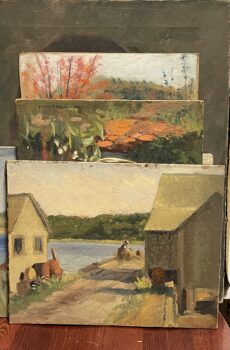
In the annals of American art history, certain names rise to prominence, celebrated for their contributions to shaping the artistic landscape of their time. However, there are countless artists whose brilliance remains largely obscured, overshadowed by the luminaries of their era. Clara Olmstead Simmons is one such artist—a turn-of-the-century American illustrator whose landscape paintings and illustrations captivated viewers with their evocative portrayal of nature and their distinctive blend of artistic styles.
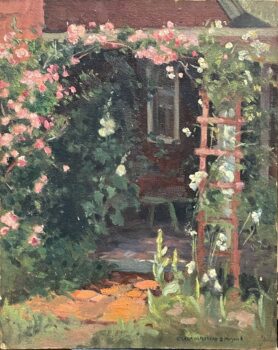
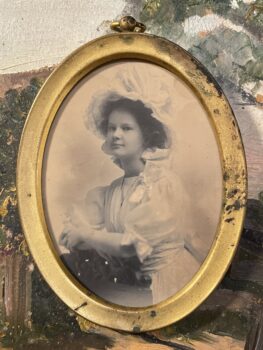 Born in 1882, Clara Hahn Olmstead embarked on her artistic journey during a period of immense artistic ferment. It was a time when the Impressionist movement had reached the shores of America, leaving an indelible mark on the artistic consciousness of the nation. The influence of this movement is palpable in Olmstead’s muted tonal oils, especially in her New England coastal scenes. With a keen eye for capturing the colors of nature, she painted with a sensitivity that was undoubtedly informed by the Impressionist school.
Born in 1882, Clara Hahn Olmstead embarked on her artistic journey during a period of immense artistic ferment. It was a time when the Impressionist movement had reached the shores of America, leaving an indelible mark on the artistic consciousness of the nation. The influence of this movement is palpable in Olmstead’s muted tonal oils, especially in her New England coastal scenes. With a keen eye for capturing the colors of nature, she painted with a sensitivity that was undoubtedly informed by the Impressionist school.Yet, Olmstead’s work went beyond mere imitation. It was steeped in the classical elements of American academic techniques often associated with the New York School, which later evolved into the Ashcan movement. Her paintings exhibit a refined sense of composition, employing a balanced interplay of light and shadow to create depth and atmosphere. In many ways, her style aligns with that of fellow artist Maurice Prendergast, who also delved into scenes of everyday life with a similar artistic sensibility.

However, Olmstead’s artistic prowess extended beyond landscape paintings. She demonstrated exceptional skill in other media as well, as exemplified by her charcoal portraits executed in the style of her teacher, George Bridgman. These portraits display a remarkable attention to detail, capturing the essence of her subjects with a remarkable fidelity.
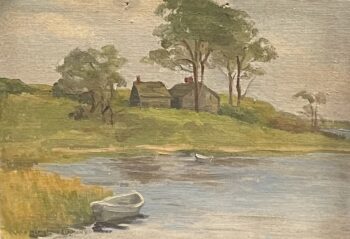
Furthermore, Olmstead’s talent found expression in the realm of book cover designs and illustrations. Her well-executed studies of book covers demonstrate her ability to merge artistic sensibility with commercial appeal, showcasing her versatility as an artist. In addition, she ventured into the realm of illustrations for children’s books, creating vivid, poster-like color drawings that delighted young readers. These illustrations bear the charm and whimsy often associated with children’s literature, showcasing Olmstead’s ability to capture the imagination of her audience.
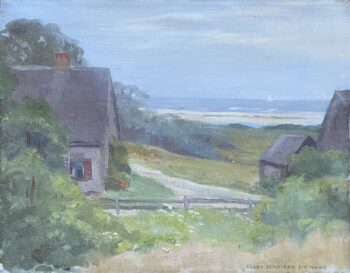
Despite her undeniable talent, Clara Olmstead Simmons remains a relatively unknown figure in the annals of art history. However, glimpses of her work have emerged in various publications and collections, shedding light on her artistic legacy. For instance, a pencil drawing by Olmstead titled “Baby wants dolly, and so does Kitty” can be found in the Victoria and Albert Museum in Great Britain. This charming illustration, executed around 1900, reveals her ability to infuse narrative and emotion into her art.
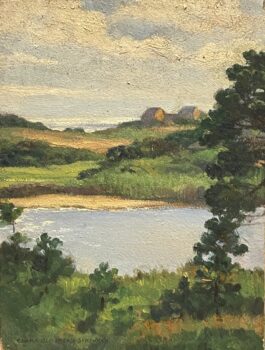
Tracing Olmstead’s trajectory, we find that she studied at Cooper Union in 1906 and attended classes with the esteemed George Bridgman during the same period. Subsequently, she embarked on a journey to London, where she secured commissions for various book and magazine illustrations. Her work can be seen gracing the pages of magazines, including the November 1906 issue of American Printer, for which she designed the cover. Her artistic prowess garnered attention, and she became recognized as one of the promising young women contributing to the vibrant artistic scene of her time.

While the full scope of Clara Olmstead Simmons’ oeuvre remains elusive, the fragments that have surfaced offer a tantalizing glimpse into her artistic world. Her lost landscape paintings and illustrations, totaling over 50 pieces of varying sizes and media, reveal an artist with a unique voice and a discerning eye for capturing the beauty of the natural world.
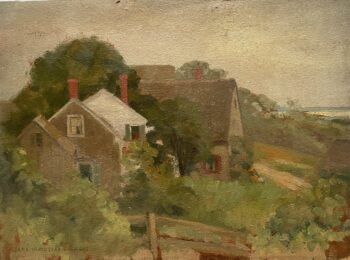
As we delve deeper into Olmstead’s body of work, we begin to appreciate her artistic evolution and the richness of her contributions. Her landscape paintings transport us to the tranquil coastal vistas of New England, where muted tones and delicate brushwork evoke a sense of serenity and contemplation. With each stroke, she masterfully renders the play of light on water, the soft hues of the sky, and the rugged beauty of the shoreline.
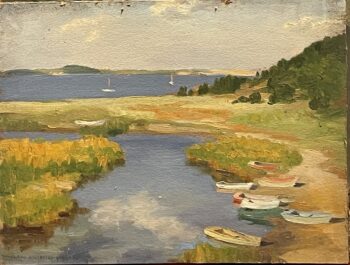
In her exploration of American academic techniques, Olmstead harkened back to the classical traditions that had shaped the artistic heritage of the nation. This fusion of styles speaks to her versatility as an artist and her ability to draw inspiration from diverse sources. Her works possess an air of timelessness, as if they exist in a realm where past and present converge.
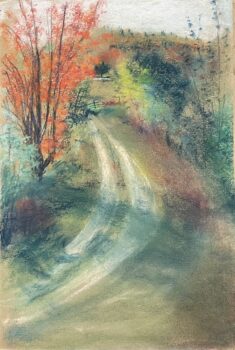
One cannot overlook the influence of her teacher, George Bridgman, on Olmstead’s artistic development. His teachings in anatomy and figure drawing left an indelible mark on her artistic sensibilities, as evidenced in her exquisite charcoal portraits. These pieces demonstrate a deep understanding of human form and a remarkable ability to capture the essence and individuality of her subjects. Through the interplay of light and shadow, she breathes life into her portraits, infusing them with a sense of depth and presence.
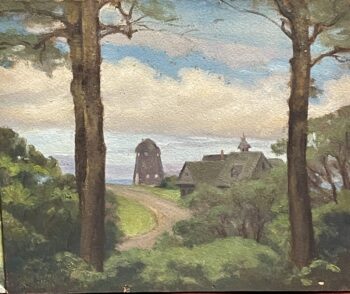
Beyond her mastery of traditional mediums, Olmstead ventured into the realm of book cover designs and illustrations. Her skillful execution of these works highlights her ability to translate her artistic vision into commercial art, striking a delicate balance between aesthetics and market appeal. Her studies of book covers reveal a keen eye for composition, typography, and visual storytelling, making her an invaluable contributor to the world of publishing.

One of the most captivating aspects of Olmstead’s artistic repertoire lies in her illustrations for children’s books. Through her vibrant and whimsical drawings, she wove tales that captivated the imaginations of young readers. These illustrations, reminiscent of poster art, brought to life the narratives and characters of children’s literature, leaving an indelible mark on the minds of generations. Olmstead’s ability to evoke a sense of wonder and joy in her young audience is a testament to her innate storytelling ability and her commitment to the art of visual communication.
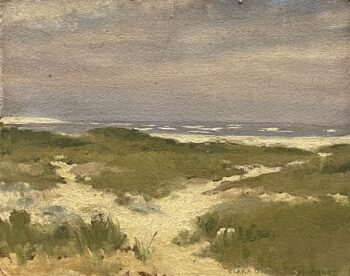
In tracing the life and work of Clara Olmstead Simmons, we unearth an artist whose talent shines brightly despite the relative obscurity in which she has been consigned. Her lost landscape paintings and illustrations, spanning the years between 1900 and 1916, form a body of work that deserves closer examination and recognition. Through her exploration of Impressionist techniques, her mastery of classical academic elements, and her forays into commercial art and children’s illustration, Olmstead emerges as a multifaceted artist with a distinctive voice.
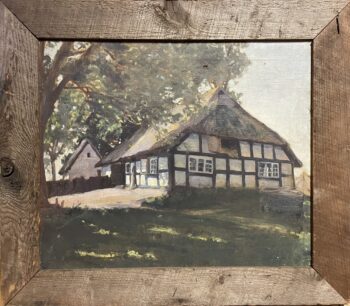
While much of her oeuvre remains hidden, scattered among private collections and forgotten publications, the fragments that have come to light attest to her artistic prowess and her enduring contribution to the artistic legacy of the early 20th century. Clara Olmstead Simmons, with her ability to capture the colors of nature, infuse classical elements with modern sensibilities, and captivate audiences with her illustrations, emerges as an artist whose rediscovery is long overdue. It is through the diligent efforts of art historians and enthusiasts that we can hope to piece together the full extent of her artistic journey and celebrate her rightful place in the pantheon of American art.
